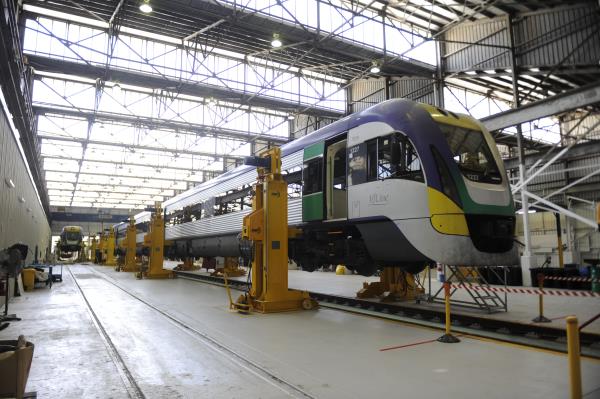By CASEY NEILL
DANDENONG manufacturers say rail investment in last week’s State Budget has put the region on track for a prosperous future.
Bombardier in Dandenong received a $274 million order for 20 E-Class Trams and a $257 million order for 21 VLocity carriages.
A Bombardier spokeswoman said the announcement was a win not only for Bombardier and its workforce “but also a great opportunity for our local suppliers and other local businesses in Victoria who will benefit from the upcoming work”.
Also in the budget was the Trains, Trams, Jobs 2015-2025 – Victorian Rolling Stock Strategy.
The 10-year plan pledges 50 per cent local content in all new orders, 100 new metropolitan trains, 100 new trams, and a regional train fleet expansion.
Jill Walsh has been a leading voice for local rail content and was “delighted” with the strategy.
“That’s really going to benefit our children and our grandchildren,” she said.
“This is not politicians making that announcement – that is statesmen. Continuous work for 10 years gives us security.
“I’ve been lobbying for 10 years to get this sort of commitment from a government so I can only applaud them.
“Putting this sort of work out there with 50 per cent local content is sending a very strong message to manufacturing in this state – that it is alive and well.”
Ms Walsh said companies could train and employ staff and invest in equipment with confidence.
The Committee for Dandenong member is a partner at Bombardier supplier Actco-Pickering Metal Industries.
“I’m looking forward to seeing that work flow through to the supply chain,” she said.
“We all need to make sure that Dandenong benefits from this wonderful largesse of rolling stock.”
South East Melbourne Manufacturers Alliance (SEMMA) has also been involved in lobbying.
SEMMA executive officer Adrian Boden said the Rolling Stock Strategy created an optimistic future for rail manufacturing in Victoria.
“However, the term of the plan is considered somewhat short given that the lifespan of rail infrastructure is 30 years,” he said.
“Ideally this plan would be more long-term to ensure all infrastructure is maintained and turned over as it is needed rather than forcing a bulk purchase in times of desperation.”








